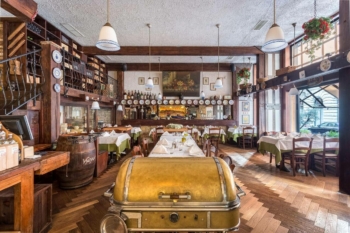Hungarian honey falsified – this is how you can tell original from fake
Hungarian acacia honey’s price rose by 60 per cent between 2018 and 2021. Since it is a popular product, this type of honey became a target of fake honey makers. A Hungarian website gathered some tips on how you can identify the original Hungarian products. They also asked the National Food Chain Safety Office (Nébih) how they plan to stop the criminals.
It is good business to produce fake Hungarian honey
According to Pénzcentrum, the newest fake honey scandal broke at the end of 2021. Authorities reported then that they found fake jars of honey on the shelves of the Hungarian shops in huge quantities. József Klenáncz was in the focus of the scandal who the court convicted for selling fake honey before.
Moreover, fake Chinese honey is also present in the EU market. That is why pénzcentrum found out how you could tell the original from the fake products.
The cause of the falsification is that the price of honey rose significantly in the last few years. One kg of acacia honey cost 600 HUF (2.5 EUR) more in 2020 than in 2019. That rose by another 600 HUF between 2020 and 2021. As a result, in 2021 January, honey cost 33 per cent more than in 2019.
But that was only the tip of the iceberg. By November, the price of acacia honey increased shockingly. The average price per kg was 4,640 HUF (13 EUR), which went up to 5,640 HUF (15.8 EUR). That meant a 22 per cent price increase in just ten months. As a result, the cost of acacia honey rose by 62 per cent between 2019 and 2021, which means a plus 2,100 HUF (5.88 EUR) per kg. Thus, it is not surprising that more jumped into the fake honey industry in the last three years.
Here is how you can tell the original from the fake one
One way of making fake honey is to mix the nectar of the Robinia pseudoacacia and the nectar of some flowers. The Nébih said that the latter is much cheaper than the former, so the profit is significant. The authority added that they found labelling problems, as well. For example, some shops did not properly mark the place of production and origin.
Pénzcentrum says that there are multiple forms of fake honey. First, if you sell a cheaper type in the jar of a more expensive one. Other criminals forge the place of origin or the plant source of the product. Another way is to mix honey with sugar syrup (corn, rice, sugar beet, sugar cane). The indirect method is to give such sugar syrup to the bees, so they put it in their honey – tudatosvasarlo.hu says. A more scientific way of falsification is the so-called resin filtering technology, which causes problems even for labs. During that, the fake honey makers filter all the valuable dry extract content and get a light-coloured residue. If they put the typical nectar of a given geographical location, they can sell it as local, high-quality honey. In Hungary, the target of this technology is the already light-coloured acacia.
Telling original from fake honey is very difficult – Nébih admitted. The first thing the customers should check is that the acacia honey is greenish light yellow. Moreover, the acacia honey crystallizes slowly. If the honey in a jar is solid, that can still be good (e.g. sunflower honey), but not acacia. However, Nébih cleared that the reliability of these checking techniques is not 100 per cent. Therefore, all questionable products have to be checked in accredited labs.
Producers want immediate law updates. Nébih said that a new modification would make producers write on each jar the source of the honey. If there are more types in a jar, they will have to mark each type’s source and quantity.

Read alsoRestaurants to check out in Budapest if you love international food – PHOTOS
Source: Pénzcentrum, Helló Vidék, tudatosvasarlo.hu
please make a donation here
Hot news
Attention: Timetable changes on Budapest-Vienna railway line
Fuel prices in Hungary finally down to regional average, says economy minister
Important: One week left to register for EP election postal voting
PHOTOS: New leisure venue opens in the heart of Budapest
Orbán-Zelensky talks: Hungary supports every peace initiative
Guest workers come to Hungary even though they could earn more in Western Europe




